Wildlife lovers can embark on their own safaris without a plane ticket by visiting animal sanctuaries and refuges. Across the region, meet tigers, lions, bears, wolves, elk, giraffes, zebras, and bison, often roaming free in natural settings. Many of them were rescued after being injured, neglected, or abandoned, and while some are released back into the wild after rehabilitation, for others these are their “retirement homes.”
1. Turpentine Creek Wildlife Refuge
Eureka Springs, Arkansas
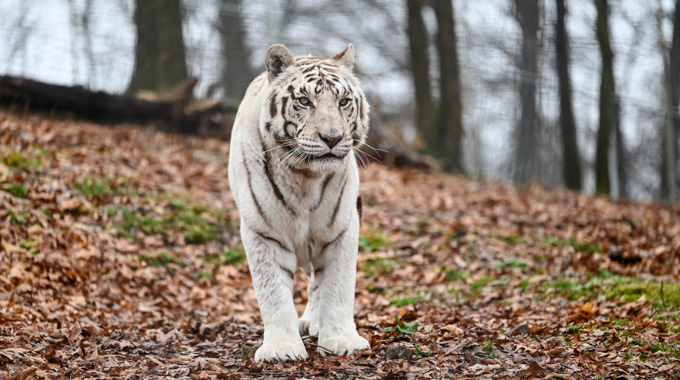
Once part of a Las Vegas magic show, Bosco now roams at Turpentine Creek Wildlife Refuge. | Photo courtesy Turpentine Creek Wildlife Refuge
Bosco, a 450-pound white tiger, is a pro at performing. For 3 years he appeared and disappeared in a Las Vegas magic show. Now he enjoys relaxing with his mate “Mamma” Shakira at the nonprofit Turpentine Creek Wildlife Refuge. His neighbors include about 100 animals that have been rescued after being abandoned, abused, or neglected by the entertainment industry, black-market breeders, and roadside zoos.
Tigers, lions, leopards, cougars, bobcats, bears, and other endangered wildlife prowl the 459-acre grassy site in the scenic Ozark Mountains. You can meet many of them in the Discovery Area and then take an in-depth guided tour to see them play and frolic in pools. They may roar, but safely from within their enclosures. Adults, $32.
2. Maxwell Wildlife Refuge
Canton, Kansas
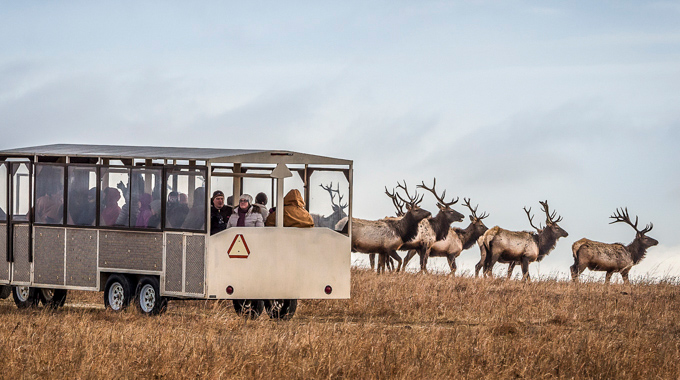
Enjoy close encounters with elk and bison on tram tours at Maxwell Wildlife Refuge. | Photo courtesy Maxwell Wildlife Refuge
At the Maxwell Wildlife Refuge, you can view the Kansas prairie as it was in the 1800s when thundering herds of bison roamed the land. Safely get up close to shaggy 2,000-pound bison on tours of this 2,600-acre refuge that’s owned by the Kansas Department of Wildlife & Parks.
On guided tram tours led by the Friends of Maxwell, admire up to 200 bison and 65 elk as they amble through the prairies. Guides offer insight into the animals and the area’s prairie ecology and cultural history. The site recalls the past even more during the annual Mountain Man Rendezvous celebration, which this year takes place September 23–25. Adults, $15.
3. Endangered Wolf Center
Eureka, Missouri
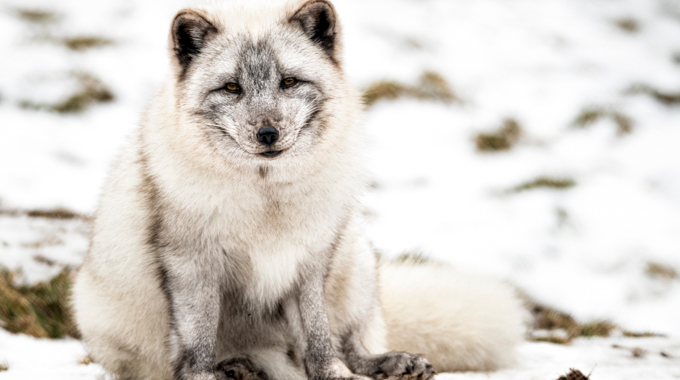
Artie, an Arctic fox, is among several species of foxes, endangered wolves, and African painted dogs protected at the Endangered Wolf Center. | Photo courtesy Endangered Wolf Center
Artie, a fluffy white Arctic fox, steals the show by posing for photos at the Endangered Wolf Center (EWC). Marlin Perkins, longtime host of Mutual of Omaha’s Wild Kingdom television show, and his wife, Carol, founded the 63-acre nonprofit center in 1971. The EWC’s mission is to preserve and protect the world’s most endangered wolf species—the Mexican wolf and the red wolf—through careful breeding, reintroduction, and education.
Many pups born here are released in the wild, but 70 animals live in the center permanently, including several species of foxes, maned wolves, and African painted dogs. Working to inspire visitors and debunk the myth of the “Big Bad Wolf,” EWC hosts several types of tours and experiences. During the popular Endangered Species Tour, learn about the importance of each species and the roles they play in the health of our ecosystems. Adults, $18.
4. World Bird Sanctuary
Valley Park, Missouri
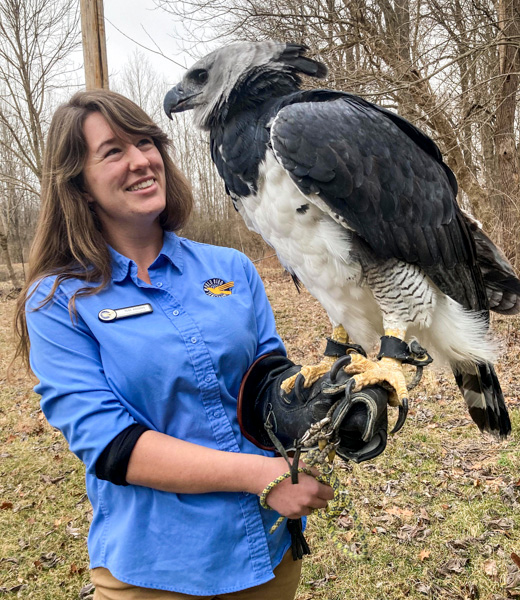
Tess Rogers, a naturalist at World Bird Sanctuary, displays Alejandro, a harpy eagle that serves as an avian ambassador at the site. | Photo courtesy World Bird Sanctuary
Of course, one of the best bird-watching sites in the Midwest is located on Bald Eagle Ridge Road. Located on 305 wooded acres, the independent nonprofit World Bird Sanctuary is home to many endangered species. You will not need high-powered binoculars or cameras to see and record falcons, hawks, buzzards, owls, vultures, parrots, pelicans, condors, and, yes, bald eagles.
In addition to seeing birds in the visitors center and outdoor exhibit areas, guests can watch seasonal shows and sign up for naturalist-led encounters of raptors, an emu, and more. The sanctuary also treats 600 patients a year that have been injured by cars, barbed wire, fishing lines, and more. Of the birds that are able to be set free, most spend less than 12 weeks in care and rehabilitation. They are prepared for release in flight enclosures. $8 per car; encounters and some animal shows are an additional fee.
5. Crown Ridge Tiger Sanctuary
Ste. Genevieve, Missouri
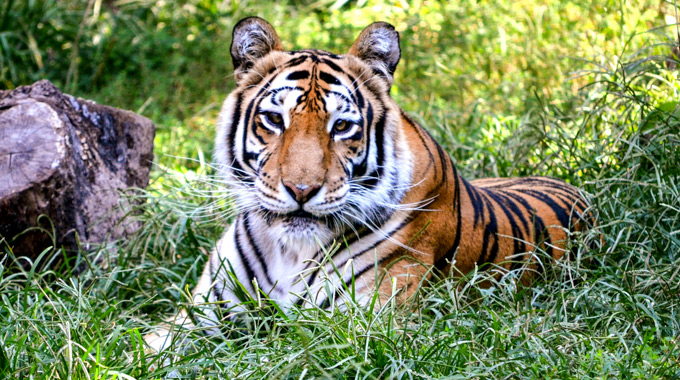
Thor, one of four resident tigers at Crown Ridge Tiger Sanctuary, lazes in the shade. | Photo courtesy Crown Ridge Tiger Sanctuary
Sebastian, a 6-year-old tiger, is a television star of sorts. He is one of the tigers rescued from an Oklahoma animal park featured in the Netflix series Tiger King. The U.S. Department of Justice removed the animals because of Endangered Species Act violations and sent them to sanctuaries nationwide, including the nonprofit Crown Ridge Tiger Sanctuary.
Sebastian has joined 3 other tigers—Izzy, Gracie, and Thor—that were rescued from other places across the country. Guides tell their stories on 40- to 50-minute tours and share how they were saved. Watch them happily play with watermelons and pumpkins. Like most sanctuaries, this one does not buy, sell, trade, or breed animals. $10 per person; children 3 and under, free.
6. Wolf Park
Battle Ground, Indiana
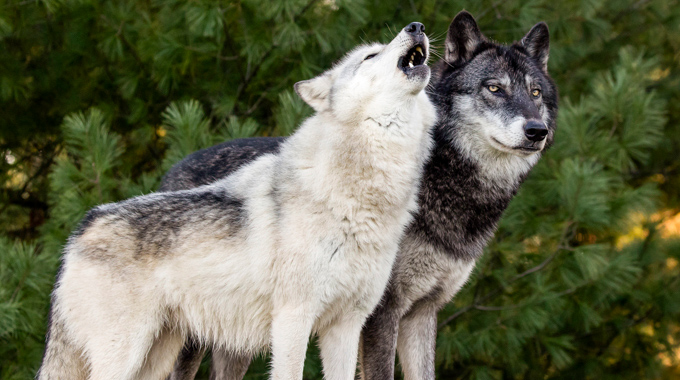
Visitors to Wolf Park will occasionally hear the wolves howl, one of their forms of communication. | Photo courtesy Monty Sloan/Wolf Park
Celebrating its 50th anniversary this year, Wolf Park is home to a small band of animals, including 6 wolves, that serve as ambassadors for their wild relatives. All the animals at the 78-acre nonprofit sanctuary have their own names and personalities. The sanctuary is dedicated to behavioral research, education, and conservation. Other permanent residents include 4 foxes and 11 bison. None of them are candidates for release.
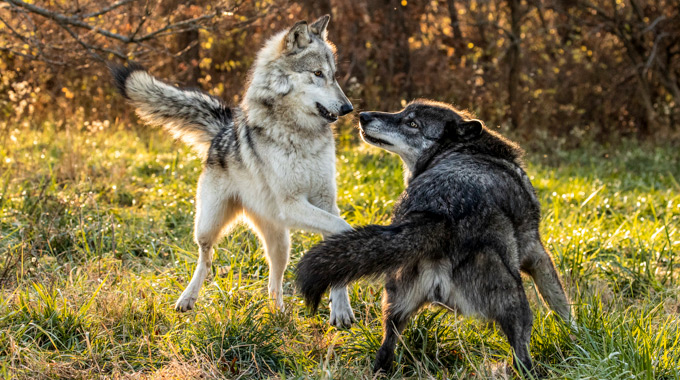
Sparrow and Niko playing in a meadow at Wolf Park. | Photo courtesy Monty Sloan/Wolf Park
To get to know them, make a reservation for a variety of tours. Docents lead you through the park on the 45-minute Follow the Pack Tour that showcases all of the animals. Self-guided tours and other events are scheduled at sunrise and twilight, when the animals are most active, and you can join the staff during feeding time on another engaging tour. Wolves know how to speak up—loudly—and you can hear them and answer back on Howl Nights. Adult tours start at $10.
7. TreeHouse Wildlife Center
Dow, Illinois
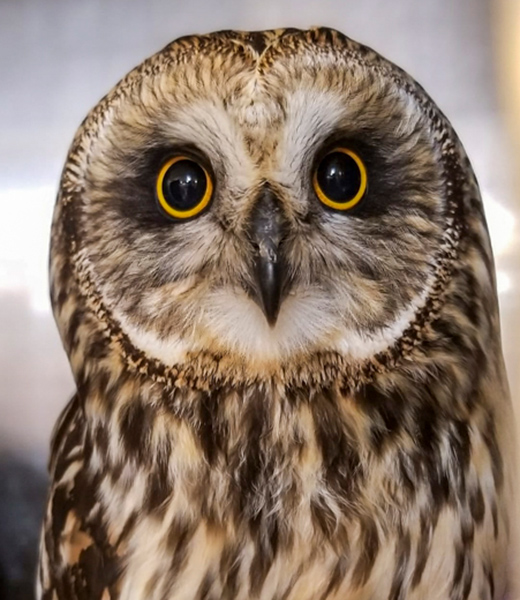
A short-eared owl rehabilitated by the TreeHouse Wildlife Center. | Photo courtesy TreeHouse Wildlife Center
Isaac Newton, a turkey vulture, won the Critter of the Year contest in 2020 and 2021 at TreeHouse Wildlife Center, located between Alton and Grafton in southern Illinois. Named for the famous English mathematician, Isaac can’t count but is more likely than some other resident animals to interact with visitors because he’s used to being around humans. He was saved from an old farmhouse before it was demolished.
Located on 8.5 acres, TreeHouse is dedicated to the rescue, rehabilitation, and release of native wildlife while promoting environmental awareness through education. The nonprofit center partners with the Hawthorne Animal Hospital for the creatures’ care. Open for more than 40 years, the center currently has 72 permanent residents that can be viewed, and daily patient intake can range from 1 to 30 or more, including birds, possums, foxes, and deer. Free, but donations are encouraged.
8. Chimp Haven
Keithville, Louisiana
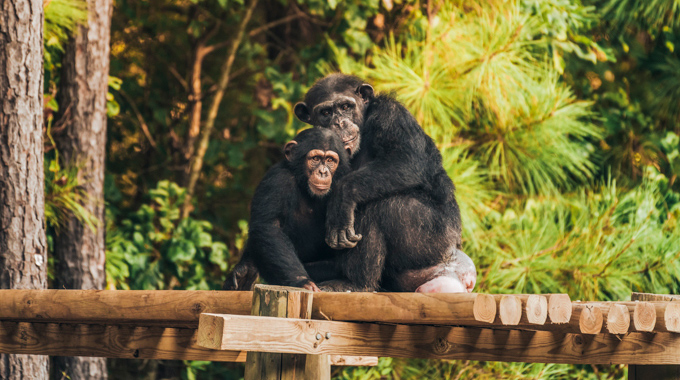
Glimpse chimpanzees in their forested habitat at Chimp Haven during two open houses each year. | Photo courtesy Chimp Haven
More than 300 chimpanzees cavort, explore, and swing from trees in the 200-acre Chimp Haven, located about 22 miles southwest of Shreveport. Almost all of the resident chimps have survived biological research. Now in retirement, they bond in large groups in the natural environment, which is the world’s largest chimpanzee sanctuary.
Not monkeys, they are classified as great apes and show many signs of intelligence, including the use of tools. They are strong and can be aggressive, and as such, should never be kept as pets. See them from a distance in their forested habitats during 2 Chimpanzee Discovery Days each year that feature tours and chats from the staff about chimp behaviors, care, and enrichment; the next one will be held October 15. $10 for ages 6 and older. Private tours for up to 6 people are held year-round for a minimum donation of $500.
9. Global Wildlife Center
Folsom, Louisiana
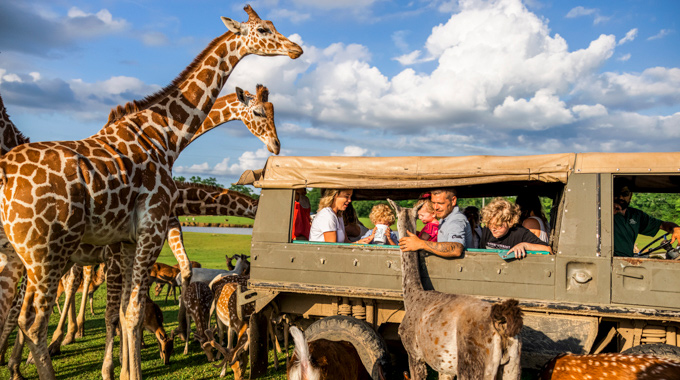
On safari wagon tours at Global Wildlife Center, you can touch and feed giraffes, zebras, camels, and more. | Photo courtesy globalwildlife.com
Save the airfare to Africa. Global Wildlife Center promises a close-up look at giraffes, zebras, camels, kangaroos, llamas, and other animals from the wildlife-rich continent and other locales around the world. Board a safari wagon or take a private tour through the 900-acre gently rolling preserve, which has 12 ponds and a lake.
Thousands of resident animals roam free and will come to you to nibble on special food that you can buy in cups, buckets, and sacks. You’ll even get the chance to touch some of animals as they reach in the wagons to be fed. Wildlife photos are guaranteed. Adults, $19.
10. Institute for Marine Mammal Studies
Gulfport, Mississippi

The Institute for Marine Mammal Studies rescues, rehabilitates, and returns sea creatures back to the ocean, including turtles, dolphins, and whales. | Photo courtesy Institute for Marine Mammal Studies
Two baby dolphins who recently lost their mother are among the many marine animals nursed back to health at the Institute for Marine Mammal Studies. Since 1984, the institute has cared for sick, injured, and stranded animals so they can be returned to their natural habitats.
The institute’s Ocean Adventures Marine Park economically supports the conservation, rescue, and rehabilitation mission with admission for its shows, presentations, and talks each day. Among other experiences are dolphin-pool interaction, stingray encounters, and the Discovery Room with pools for touching sea urchins, horseshoe crabs, and starfish. You can even feed parakeets in the aviary. Admission, $16.50; animal encounters are additional.
Freelance writer John Handley of Northbrook, Illinois, enjoys watching and photographing animals.
Travel offers & deals





